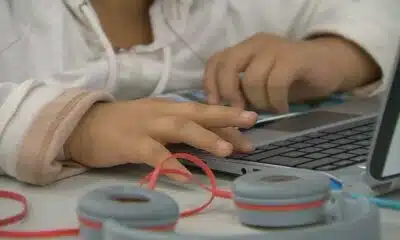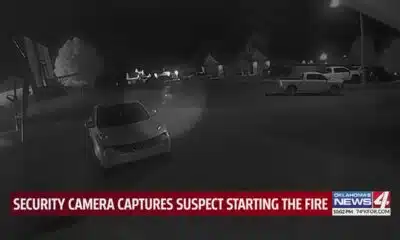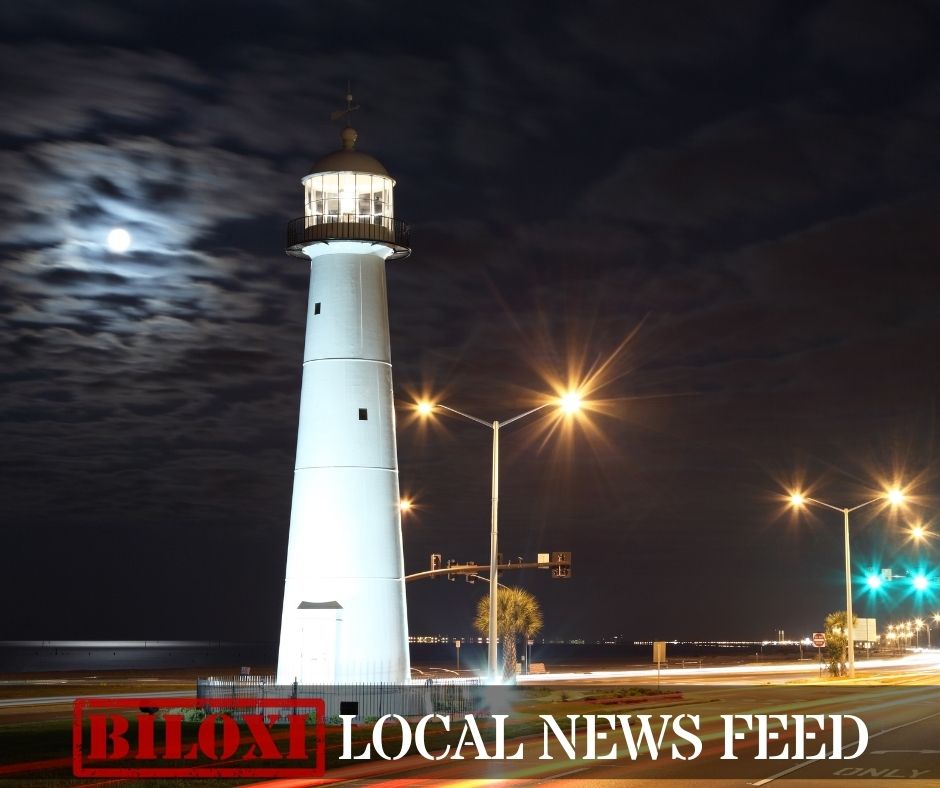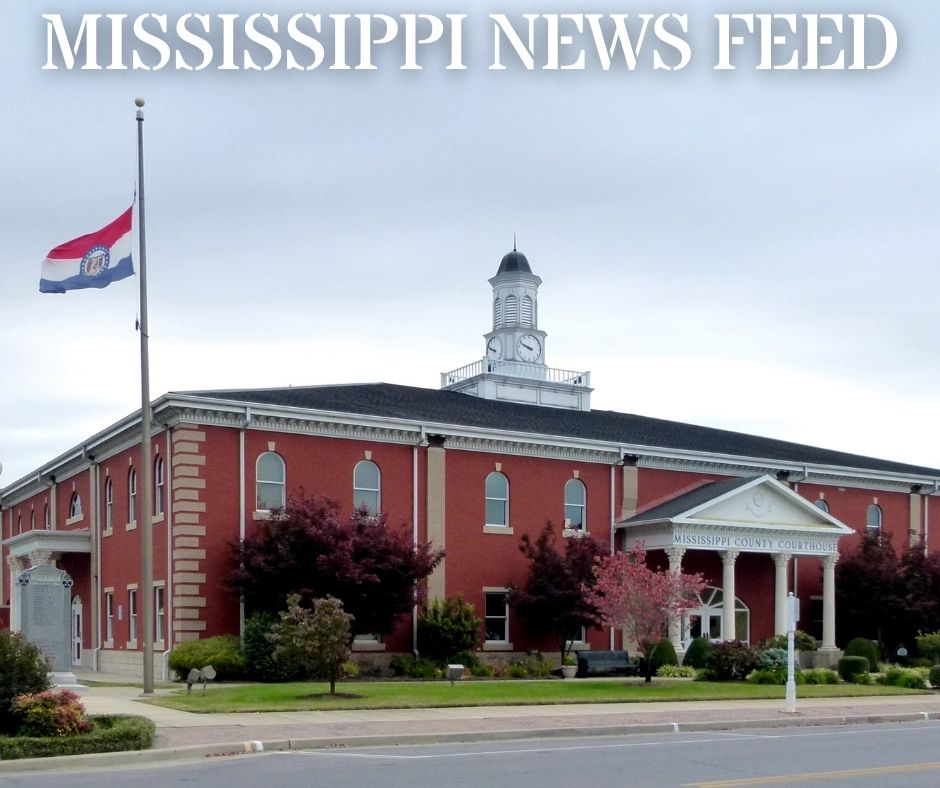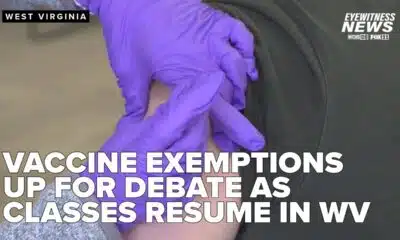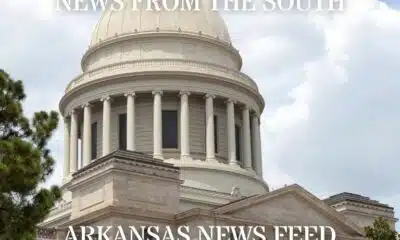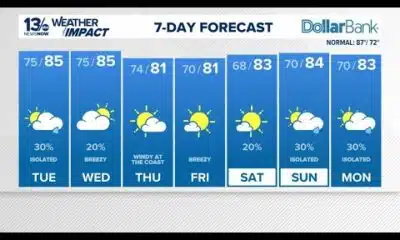News from the South - West Virginia News Feed
‘We call it betrayal’: Veterans join Dems in D.C. to protest Trump’s sweeping VA job cuts
by Ashley Murray, West Virginia Watch
May 6, 2025
WASHINGTON — Veterans and Democratic lawmakers on Capitol Hill Tuesday protested the Trump administration’s planned cuts for the Department of Veterans Affairs that include slashing some 80,000 jobs, which many worry will affect the massive agency’s delivery of medical care and benefits.
The group rallied outside the U.S. Capitol shortly after VA Secretary Doug Collins finished lengthy questioning before the Senate Committee on Veterans Affairs, where he defended the cuts as necessary to improve the department’s efficiency.
Holding signs that read “Veterans Healthcare Not For Sale,” a crowd of former service members joined by senators and representatives decried that argument as “nonsensical,” as Sen. Richard Blumenthal, top Democrat on the Veterans Affairs Committee, put it.
“We’re not going to allow veterans to be betrayed by this administration,” Blumenthal, of Connecticut, said. “I’ve just come from a hearing with the VA secretary, and to say it was a disappointment is a huge understatement. That hearing was a disgrace.”
‘Non-stop smear campaign’
Jose Vasquez, executive director of Common Defense, the advocacy group that organized the press conference, said, “They call this efficiency, but we call it betrayal.”
Vasquez, an Army veteran who recently received care from the VA in New York for a cancerous tumor on his pancreas, said, “Millions of veterans depend on VA every day — survivors of cancer, toxic exposure, traumatic brain injuries and post-traumatic stress.”
He contends the agency’s workers, many of whom are veterans, have been the target of a “non-stop smear campaign.”
“Why? Simple. Because a small group of greedy billionaires would rather get tax cuts than pay for the true cost of war,” Vasquez.
Trump’s temporary DOGE organization, led by top campaign donor Elon Musk, cut roughly 2,400 VA jobs in early March.
Collins, a former Georgia congressman who still serves in the Air Force Reserve, unveiled a plan in early March to return VA staffing to 2019 levels of 398,000, down from the current approximately 470,000 positions.
The lawmaker told senators Tuesday that he’s “conducting a thorough review of the department’s structure and staffing across the enterprise.”
“We’re going to maintain VA’s mission-essential jobs like doctors, nurses and claims processors, while phasing out non-mission-essential roles like interior designers and DEI officers. The savings we achieve will be redirected to veteran health care and benefits,” Collins said.
Collins drew pushback during the hearing, including from Sen. Elissa Slotkin of Michigan, who told the secretary “there’s no way that all those 80,000 are in those job fields,” referring to his comment about DEI and interior designers.
“I’m having a problem understanding how the veterans in Michigan are going to get the same or better care, which is what we want,” said Slotkin, who served three tours in Iraq as a CIA analyst.
GOP says VA must change
Many Republicans on the panel maintained the VA, as Sen. Thom Tillis of North Carolina said, “is not working.”
“If we just say everything has to stay the same and you just gotta add more money and more people, then you’re looking at it the wrong way,” Tillis said, adding that he’s “open to any suggestions” and will review the proposal for workforce reductions.
Collins criticized the increase in hiring under former President Joe Biden, who signed into law the PACT Act, the largest expansion of VA benefits in decades.
The law opened care to roughly 1 million veterans who developed certain conditions and cancers following exposure to burn pits in Iraq and Afghanistan as well as Vietnam vets exposed to Agent Orange.
Republican Sen. Kevin Cramer of North Dakota said Collins was being “battered” about the possible 80,000 cuts. “Correct me if I’m wrong, but I believe there were 52,000 new positions added between 2021 and 2024. … That 52,000, has that saved the day for our veterans?
“I don’t think so,” Collins responded.
But at the rally afterward, Democratic Rep. Chris Deluzio, a former Navy officer who served in Iraq, defended the PACT Act expansion.
“At this moment when so many toxic-exposed veterans of my generation, Agent Orange-exposed veterans from the Vietnam era, are finally getting the benefits they’ve earned because of the PACT Act, we should be investing in the resources for the VA, and Donald Trump and his team are doing the opposite,” said Deluzio, who represents Pennsylvania.
West Virginia Watch is part of States Newsroom, a nonprofit news network supported by grants and a coalition of donors as a 501c(3) public charity. West Virginia Watch maintains editorial independence. Contact Editor Leann Ray for questions: info@westvirginiawatch.com.
The post ‘We call it betrayal’: Veterans join Dems in D.C. to protest Trump’s sweeping VA job cuts appeared first on westvirginiawatch.com
Note: The following A.I. based commentary is not part of the original article, reproduced above, but is offered in the hopes that it will promote greater media literacy and critical thinking, by making any potential bias more visible to the reader –Staff Editor.
Political Bias Rating: Center-Left
This content primarily features criticism of the Trump administration’s proposed cuts to the Department of Veterans Affairs, highlighting concerns from Democratic lawmakers and veterans about the impact on healthcare and benefits for veterans. The article presents voices advocating for maintaining or increasing support for the VA, aligning with a politically center-left viewpoint that favors government-funded social services and protections for veterans. While it reports statements from some Republicans, the overall tone emphasizes opposition to the cuts and supports expanded veteran benefits, reflecting a center-left bias.
News from the South - West Virginia News Feed
WEEKEND WEATHER AUG 24TH
SUMMARY: WEEKEND WEATHER AUG 24TH: Today was a pleasant, typical summer day with temperatures reaching 80° in Beckley. A cold front is moving through tonight, bringing increasingly breezy winds and cooler air, dropping temps to the high 50s overnight and into the 40s early next week. Rain chances remain very low, with mainly dry conditions expected tonight and tomorrow. Monday will feature a mix of clouds and sun with highs in the high 60s to low 70s—cooler than normal. Low humidity and comfortable weather will continue through the week, making it a great time to enjoy the outdoors as fall arrives early.
FOLLOW US ON FACEBOOK AND TWITTER:
https://facebook.com/WOAYNewsWatch
https://twitter.com/WOAYNewsWatch
News from the South - West Virginia News Feed
Feds direct states to check immigration status of their Medicaid enrollees
by Anna Claire Vollers, West Virginia Watch
August 22, 2025
This week, the Trump administration’s Centers for Medicare & Medicaid Services (CMS) announced an effort to check the immigration status of people who get their health insurance through Medicaid and the Children’s Health Insurance Program.
Medicaid is the public health insurance program for people with low incomes that’s jointly funded by states and the federal government. For families that earn too much to qualify for Medicaid but not enough to afford private insurance, CHIP is a public program that provides low-cost health coverage for their children.
The feds will begin sending states monthly enrollment reports that identify people with Medicaid or CHIP whose immigration or citizenship status can’t be confirmed through federal databases. States are then responsible for verifying the citizenship or immigration status of individuals in those reports. States are expected to take “appropriate actions when necessary, including adjusting coverage or enforcing non-citizen eligibility rules,” according to a CMS press release.
“We are tightening oversight of enrollment to safeguard taxpayer dollars and guarantee that these vital programs serve only those who are truly eligible under the law,” Robert F. Kennedy Jr., who oversees CMS as secretary of the U.S. Department of Health and Human Services, said in a press release announcing the new program.
As of April, roughly 71 million adults and children nationwide have Medicaid coverage, while another 7 million children have insurance through CHIP. Immigrants under age 65 are less likely to be covered by Medicaid than U.S.-born citizens, according to an analysis from health research organization KFF.
Immigrants who are in the country illegally aren’t eligible for federally funded Medicaid and CHIP. Only citizens and certain lawfully present immigrants — green card holders and refugees, for example — can qualify.
But some states have chosen to expand Medicaid coverage for immigrants with their own funds. Twenty-three states offer pregnancy-related care regardless of citizenship or immigration status, according to KFF. Fourteen states provide coverage for children in low-income families regardless of immigration status, while seven states offer coverage to some adults regardless of status.
The tax and spending package President Donald Trump last month cuts federal spending on Medicaid by more than $1 trillion, leaving states to either make up the difference with their own funds or reduce coverage. But the new law also includes restrictions on coverage for certain immigrants, including stripping eligibility from refugees and asylum-seekers.
Stateline reporter Anna Claire Vollers can be reached at avollers@stateline.org.
West Virginia Watch is part of States Newsroom, a nonprofit news network supported by grants and a coalition of donors as a 501c(3) public charity. West Virginia Watch maintains editorial independence. Contact Editor Leann Ray for questions: info@westvirginiawatch.com.
The post Feds direct states to check immigration status of their Medicaid enrollees appeared first on westvirginiawatch.com
Note: The following A.I. based commentary is not part of the original article, reproduced above, but is offered in the hopes that it will promote greater media literacy and critical thinking, by making any potential bias more visible to the reader –Staff Editor.
Political Bias Rating: Centrist
This article provides a balanced overview of recent policy changes to Medicaid and CHIP enrollment verification tied to immigration status. It presents facts, official statements, and statistics without emotive language or partisan framing. Both the rationale behind the policy, such as safeguarding taxpayer dollars, and the impact on immigrants are covered objectively. The inclusion of context on eligibility rules and varying state approaches reinforces a neutral, informative tone, typical of centrist reporting seeking to inform rather than advocate.
News from the South - West Virginia News Feed
Students go back to school in West Virginia, but same education debates rage
by Andrew Donaldson, West Virginia Watch
August 21, 2025
While students across the Mountain State are going back to school to advance to the next grade, many parents and most of the politicians seemed to be held back in the same spots with the same education arguments of the last few years.
News headlines and social media stories come one at a time on the as-needed basis as events and the business model dictate. But separate news items and viral debates over school choice, school funding, school vaccination requirements, school closings, school performance, and school staffing are variations on one theme: What is education, and who should control it?
That basic “who/what” question of intent and control is not unique to education issues. All political stories when reduced to their essences are stories about power and money. Education has become more and more a political endeavour, because of inherently involved power and money. As such, the rules of discerning politics apply far more than the traditional policy ideas and learning philosophies of what information goes into a student and how to evaluate the information coming out of a student. Add in the culture warring elements fueled by the modern marriage of news media and social media, and you have an environment that is heavy on the vibes and light on vocation.
The COVID-19 crisis is justifiably noted to be an inflection point in the push-pull world of policy and politics in general and education specifically. COVID — or more specifically the reaction by the people involved in running the institutions of American society from schools, to government, to health care, to social order — revealed the pre-existing flaws with a stress test that most everyone failed to one degree or another. While the high-minded ideals of learning, education and bettering the next generation were still recited as if the words themselves would magically manifest such things into malleable minds, reality told a different story.
Schools were closed, opened, closed again, re-opened with restrictions and not-ready-for-prime-time hybrid and online learning. Exceptions and standards had to be adjusted on the fly. Parents and the government had a tug-of-war over who could better understand an unprecedented crisis in public health and public trust with in-classroom teachers and their students as the rope.
The generation of students who lived through it heard all the buzzwords and platitudes, but weighed them against their lived experience, and found them wanting. Words said education matters, students matter, learning matters. Actions told them the priority of the education system was to be a giant jobs and funding program first, a daycare for parents second, and once that was all satisfied, perhaps you might learn something while being taught to pass a test to show what you learned.
Post-COVID, plenty of parents and politicians seem unable to let go of the tug-of-war rope. While the individual debates over issues like the vaccine exemptions, the ballooning cost of the Hope Scholarship, and debates over what should and shouldn’t be included in curriculum continue, perspective is badly needed that all these threads form the one cord of systematically educating students. The in-classroom teachers and students are on a treadmill that starts every August and keeps going until the following June. Education in the United States of America in the Year of Our Lord 2025 is very much a machine that does not stop.
The ever-entwined socio-political news and social media coverage of education runs at variable speeds, mostly parallel to the actual in-classroom education system. When the news narratives and social media attention does cross over into the real world education system, chaos and confusion are usually the result. Regardless of the chaos or the reason du jour, the in-classroom teachers have to press ahead with the students. While the algorithms and consultants keep us entertained, the pressure on an already overworked, underfunded and constantly criticized in-classroom environment is doing no one any favors.
Not that there ever was an era of magnanimous politics, but even with cellphones being banned from classrooms the rising generations of students have more information on current events than ever before. Those students aren’t just learning the curriculum; they are learning what the adults — teachers, parents, government officials, administrators — really think about them and their place in the education and political machines that drive America. And they are going to believe us.
GET THE MORNING HEADLINES.
West Virginia Watch is part of States Newsroom, a nonprofit news network supported by grants and a coalition of donors as a 501c(3) public charity. West Virginia Watch maintains editorial independence. Contact Editor Leann Ray for questions: info@westvirginiawatch.com.
The post Students go back to school in West Virginia, but same education debates rage appeared first on westvirginiawatch.com
Note: The following A.I. based commentary is not part of the original article, reproduced above, but is offered in the hopes that it will promote greater media literacy and critical thinking, by making any potential bias more visible to the reader –Staff Editor.
Political Bias Rating: Center-Left
The content presents a critical view of the current education system, highlighting systemic issues such as underfunding, politicization, and the impact of COVID-19 on schooling. It emphasizes the struggles of teachers and students within a politicized environment and calls for broader perspective and reform. While it critiques both political sides and the media’s role, the focus on social challenges and institutional shortcomings aligns more closely with center-left perspectives that advocate for systemic improvements and greater support for public education.
-
News from the South - West Virginia News Feed7 days ago
Religious exemption debate front and center amid new school year in WV
-
News from the South - Arkansas News Feed7 days ago
Trump, Zelenskyy exit White House talks hopeful about security guarantee for Ukraine
-
News from the South - Alabama News Feed6 days ago
U.S. agriculture secretary announces end to subsidies for solar panels on farmland
-
News from the South - Kentucky News Feed5 days ago
First of its kind clinical trial offers new hope for Kentuckians at risk of dementia
-
News from the South - West Virginia News Feed6 days ago
Free AI testing platform rolled out to federal employees
-
News from the South - Georgia News Feed6 days ago
Don't eat this shrimp sold at Walmart due to possible radiation contamination: FDA
-
News from the South - Arkansas News Feed6 days ago
Cities across the US are embracing AI guidelines for local government workers
-
News from the South - Virginia News Feed7 days ago
Low 80s and winds possible from Hurricane Erin











